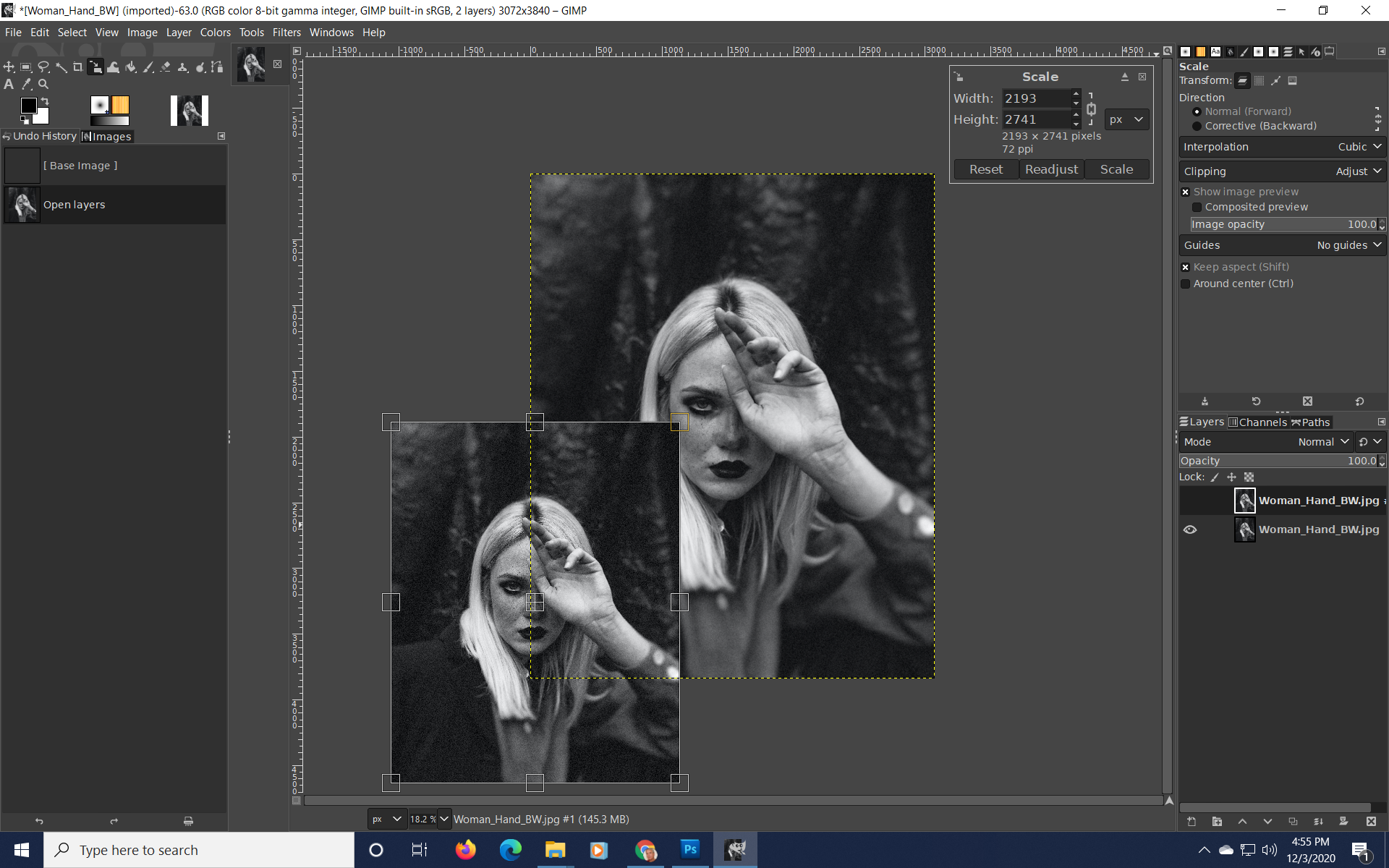
- Resize image gimp how to#
- Resize image gimp install#
- Resize image gimp pro#
- Resize image gimp windows#
You can disable this lock by clicking the grey ‘chain link’ icon between the Width and Height boxes, but it will distort your image so skip it unless you really need to turn it off.ĭon’t adjust the X Resolution and Y Resolution sections. The percentage option is the most useful alternative since it makes it easy to reduce your image to half or a quarter of its current size without doing any math.īy default, the Scale Image dialog is set to keep your image locked in the current aspect ratio. The image size is set to display in pixels, but you can choose from a range of options. Step 1: Load GIMP and open the image you want to resize using the File -> Open command, or drag and drop your image file onto an empty part of the GIMP workspace. If you’re new to the world of GIMP and image editing, you’ve probably got a million questions! I can answer this one in just a few simple steps:

Resize image gimp how to#
That’s it! But if you want to follow along more closely and learn more about the various settings and options along the way, we’ve got a more in-depth guide to how to resize an image with GIMP right below. Click the File menu, and choose Export As to save your file as a standard JPG file. If it’s not what you wanted, go back to Step 2.ĥ. Click the Scale button and check the result. Enter a new size for your image in pixels (px) or switch to percentage scaling by selecting the px dropdown menu and choosing percent.Ĥ. The Instant Guide to Resizing Images with GIMPĢ.
Resize image gimp windows#
I’ve used screenshots from the Windows version of GIMP, but the process is identical on macOS and Linux.
Resize image gimp install#
If you haven’t done that, you can learn how to install GIMP here. This guide assumes you already have GIMP installed, and that the image you want to resize is saved on your computer or removable drive. It doesn’t matter if you’re resizing images for your social media, your website, or to print out and hang on your wall, this post will cover them all. When it comes to photography, you'll want to safely store your prized images somewhere safe and secure: take a look at our guides to the best photo storage apps and the best cloud storage for photos, and find an app or service with which to back-up your edited pictures.One of the most common image editing tasks is resizing an image, and GIMP is the perfect tool for the job. If you're not keen on that idea, then you'll just have to crop that object down as best you can, and live with whatever bits are missing. You'll now have much more space to draw your 4:3 box, and it should fit (if not, you can make the background even bigger by simply doing this process over again).Įven if you don't have a white background to work with, you can still use this method to crop to 4:3 (or whatever ratio), it's just that you'll have white borders. Then click "Image" from the top menu again, and then "Flatten Image".

Now click the "Centre" button, and then "Resize". Click the broken chain-link to the right of the "Width" and "Height" boxes, so it becomes linked and these measurements are kept in proportion, and then double (or perhaps even treble if you need to create a lot of extra white space) the number in one of them (it doesn't matter which – they'll both double up as they're linked). To do this, select "Image" from the top menu, and click "Canvas Size". With a white background, you can simply make that white background larger to give you more space to crop, so you're not chopping bits of the phone off. Say you've got an image of a smartphone on a white background, but when cropping to 4:3 you're cutting the top and bottom bezels off the handset, so it looks silly. Scale with a white backgroundīut what if your image is a non-square shape with so much difference between the vertical and horizontal pixel size that you can't actually fit the central object of the picture fully into the 4:3 box?

You can then scale it to the correct size as we discussed above (via the "Scale Image" menu). Now you can draw your 4:3 box on the image, adjust it to your liking, then click in the middle of it to crop the picture down to a 4:3 image. Now, click in the box directly underneath where you just ticked, and type in the aspect ratio you want, in this case "4:3" (without the quote marks, of course). There's a little box next to where it says "Fixed (Aspect Ratio)" – tick this. To make this box keep to a 4:3 ratio, you'll need to look in the Toolbox window, under the Tool Options section where it says "Crop".

To crop the image to 4:3 (or whatever ratio you want), select the "Crop" tool (Shift+C) which allows you to draw a box on your picture.
Resize image gimp pro#
Maybe you want to scale your image to a specific size, to fit, say, your blog site? On IT Pro Portal, for example, we use article header images with a 4:3 ratio, so let's do that as an example.


 0 kommentar(er)
0 kommentar(er)
